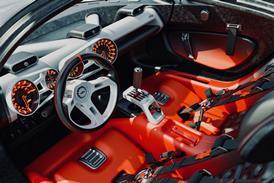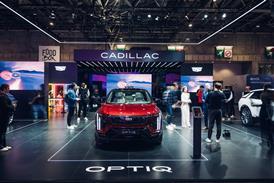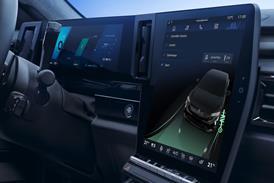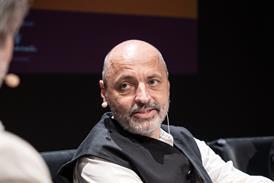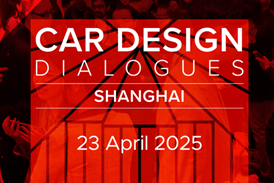







Audi: Designing an Icon
Matthias Nirschl
Sponsored by Audi, Nirschl designed a strategic concept for the automaker's TT model in the year 2027 - the vehicle's fifth generation. Taking into account the trends and needs of future societies, the concept combines sustainability and Audi brand values: progressive, sporting and premium. According to its creator, the future Audi customer will no longer buy a car, but will purchase mobility. Therefore the main structure of the car can be refurbished and resold. Propelled by an innovative ‘Power-Box' system, which uses every kind of generator or storage battery, users will no longer need to depend on a single source of energy. The silhouette of the TT, the concept's main design element, is conserved, while the vehicle's proportions are interpreted in a new geometrical and streamlined shape.





BMW Tas© - Transform Activity Sports Car
Claudia Schmied
Stemming from the premise that modern day are developed with only one specific attribute, Schmied developed a concept that covers more than one interest; a vehicle plan with multifunctional attributes, which does not fit into any one vehicle typology. The Tas©'s 3800mm length (roughly that of a Mini) combines the sporty impression of the BMW 1 Series and the off-road ability of the X3. Thanks to its 2+2 seating configuration, the vehicle also provides accommodation for four persons, while its asymmetric external storage solutions are made to integrate summer and winter sports equipment without the need for a roof rack. This can be extended to accommodate a bike, skis and surf boards.
Lamborghini Jarama ICT 500
Tobias Drews
The Jarama ICT 500 was created for the Aerotopia scenario, which is based on a society that uses compressed air for transportation and logistics. The increase in efficiency is realized by the multiple possibilities and low-complex multi-tasking elements connected to the use of CO2 in our environment, which is multiplied by intelligent control systems. The omnipresence of the streamlined shapes of cars and buildings shows the aeronautic attitude, but negates the use of air. The Lamborghini Jarama ICT 500, which gets its name from the strange proportions - created by the central position of the 500-bar air tank that pushes the greenhouse far to the rear - and innovations such as the in-wheel-turbines (ICT - in cerchio turbina), contrasts with this passive form. The front end consists of low-complex elements like the frame, wheel suspension and air tanks, and its detached wing-like surfaces close to the rear culminate in a compact stump, enhancing aerodynamics.
Other projects on show included:
Audi Electric GT (Internship project)
Helmut Jung
This concept, designed specifically to celebrate Audi's 100th anniversary, represents the four main aspects of of the German luxury brand: tradition, Quattro all-wheel-drive, aerodynamics and design. Featuring traditional Auto Union race car surface treatments, wheelarches that draw attention to the four-wheel propulsion system and emphasize the concept's wide, planted stance, the grand tourer also includes functional air ducts to cool the electrical components between the body and the simple but attractive exterior shell. See the video animation to the right for an interactive overview of the vehicle.
Semcon X-Power: ‘First Russian Sportscar'
Ferdinand Gleinser
Semcon X-Power design study, a cooperative project between Semcon and the Munich University of Applied Sciences, is based on the platform of the existing MG X-Power - a pure, uncompromised high-end sports coupé with a complete exterior shell made of carbon. An up-to-date and respectful homage to legendary American muscle cars, the concept's classic design features come together to celebrate the power of a slick sports car. Its large hood, designed to conceal a 4.6-liter V8 racing engine, features a ‘power dome' that give a clue of the cars potential. Even the twisted five-arm twin-spoke wheels fit into the context, providing the vehicle with a pair of high speed shoes so it can proudly represent the genes of its ancestors.
Related Article:
Munich University of Applied Sciences 'Intelligent Emotion' project










